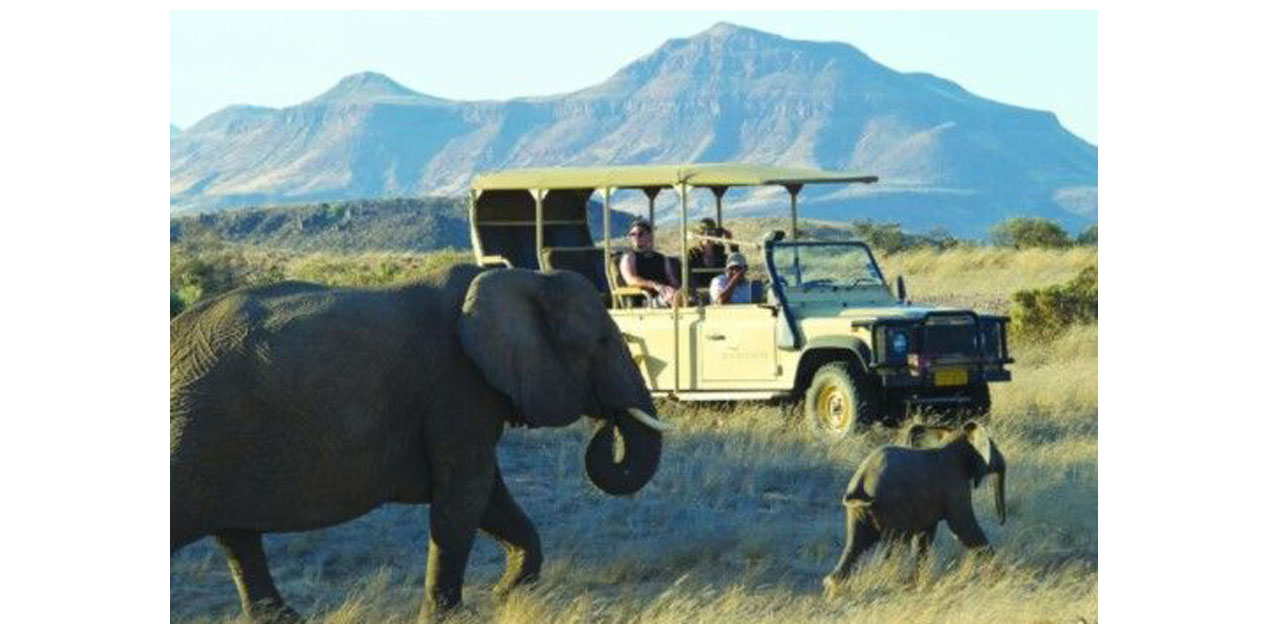Martin Endjala
Namibia’s tourism industry is slowly but surely recovering from the devastation caused by the Covid-19 pandemic and is set to become one of the best economic drivers of national revenue for the remainder of 2023.
According to Simonis Storm Securities’ latest Quarterly Economic Review report for 2023, the occupancy rate at hospitality establishments in April 2023 throughout Namibia stood at 51.8 percent, compared to the 36.5 percent recorded in the same month last year.
The tourist inflows projector is also showing a steady improvement before Namibia’s peak tourism season which runs from May to September.
According to the report, the strong uptick is due to the development of private sector green hydrogen projects, new aquatic projects such as salmon farming and kelp production in Lüderitz, investments in gas pipelines and mining explorations which also add to the boost of the tourism industry.
The report stated that this is the highest monthly occupancy rate recorded for 2023 thus far.
National occupancy rates were 11.2 percentage points higher on a monthly basis than the previous 40.7 percent.
The average in 2023 stood at 40.3 percent. It is a mere 3.7 percent short of reaching pre-pandemic levels. The average for 2019 was recorded at 44.0 percent.
According to the report, 22,610 rooms were sold in April 2023, along with 44,482 beds. This is 65 percent lower compared to the 65,449 rooms sold in April 2019.
The gap between the change in rooms and occupancy rates can be explained by the availability of fewer tourism facilities. Some facilities were forced to shut down because of draconic restrictions and regulations that were implemented to prevent the spread of SARS-CoV2.
The central area of Namibia recorded the lowest occupancy rate in April 2023, at 37.3 percent, from the highest last month at 52.7 percent.
The Coastal area had the highest occupancy rate of 58.1 percent, which is 18.4 percentage points higher than the previous month, followed by the northern area at 56.0 percent (21.5 percentage points higher than the previous month) and the southern area at 49.3 percent (8.2 percentage points higher than March 2023).
Leisure tourism is said to be the main driver of tourist inflows, accounting for 98.3 percent of visitors in April 2023, while business travellers accounted for 1.7 percent and conference attendees accounted for 0.02 percent.
The majority of visitors during April 2023 came from Germany, Austria, and Switzerland (41.0 percent). Following with the second highest occupancy rates are locals (18.6 percent), South Africans (8.3 percent) and the French (6.8 percent).
According to the Hospitality Association of Namibia, the growth in the portion of visitors from Namibia’s main tourist source markets is partly due to the availability of ten direct flights each week between Windhoek and Frankfurt.
In addition, the weakening of the Rand against other major currencies poses an advantage for foreigners in Namibia as their Euros have more spending power. The inflows from Europe picked up in January of this year and have been on an upward trend since then.
Fly Namibia increased its weekly flights to Oranjemund from three to five recently in order to cater to a growing number of Shell and Debmarine staff.
The report further states that engagements with certain stakeholders indicate that hotels in Lüderitz and guesthouses in Oranjemund are running at higher occupancy rates as a result of oil operations in the area.
Meanwhile, air transport has increased by nine percent since April 2019, with its most recent inflation recorded at 5.4 percent last month.
This is due to a low number of airlines serving Windhoek and Walvis Bay from neighbouring countries, in addition to the rising operational costs of airlines operating in South Africa.
“Going forward, we, therefore, expect regional tourist inflows and local tourism to decrease, with international tourist inflows being the main driver of the ongoing recovery in the local tourism industry,” read the report.
Subsequently, locals are occupying fewer rooms due to straining economic conditions. Accommodation services became 15.7 percent more expensive in April 2023 compared to April 2019, while accommodation services inflation stood at 6.7 percent and food inflation at 13.5 percent which is above headline inflation of 6.1 percent in April 2023.
This insinuates that locals are limited in spending on accommodation as disposable incomes are strained by higher food prices amongst other living costs.
According to NSA data, since April 2019, hotel, cafe and restaurant prices have increased by 16.9 percent, driven by both catering at 18 percent and accommodation services at 15.7 percent.
At the same time, holiday packages offered by Namibian companies have become more expensive, with the latest figure for holiday package inflation recorded at 73.6 percent in April 2023, compared to 17.9 percent in March 2023.
This is attributed to higher fuel costs, higher electricity tariffs, food inflation and higher interest rates which increase operational costs of local tourist and accommodation operators.
Whilst Holiday packages in Namibia are reliant on the use of fuel, which recorded double-digit inflation rates since April 2022, and for the first time recorded a single-digit increase in petrol and diesel prices of 2.7 percent in April 2023.
Together with food inflation increasing to 13.5 percent in April 2023, electricity charges increasing to nine percent in April 2023 and higher interest rates, holiday packages are said to likely become more expensive going forward.
Considering that the Electricity Control Board have approved an 8.97 percent increase in electricity tariffs effective 1 July 2023 as well as the expected dry season, this is also expected to add to food inflation.




